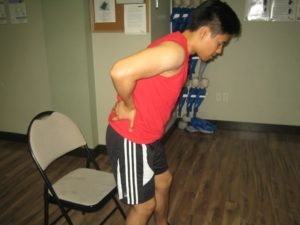The symptoms of herniated disc tend to vary based on where the injury is located. Generally, an individual might have one or more radicular symptoms. These typically include pain, pins and needles sensation, numbness, weakness or an electrical shock sensation down the arm or leg.
An individual can end up with radicular symptoms down the arm or leg since the spinal nerve roots branch off into the nerves that travel all over the body. It is important to note that every nerve root is designated to an area in which it sends nerves which is oftentimes called as dermatomes.
Oftentimes, a herniated disc can trigger pain, numbness or disturbance in the bowel or bladder or even progressive weakening of the legs. This is called as cauda equine syndrome and considered as a medical emergency that requires immediate attention. If an individual experiences cauda equine symptoms, a doctor should be consulted or bring him/her to the emergency room right away.
Symptoms based on the spinal area

Aside from the radicular symptoms present in all regions of the spine, every area has its own distinct symptoms that you should be familiar with. Depending on where the herniation is situated, the symptoms will manifest certain symptoms.
Low back
In case the low back is the affected area, the individual might also have other back pain and/or pain in the buttocks, sacroiliac area and back thigh. The back pain from the lumbar herniated disc can worsen when the individual sits and tends to improve when he/she stands or lies down. The pain can worsen if the individual exerts especially when engaging in bending or twisting movements. In addition, it will also worsen during sneezing, coughing or straining.
Neck
An individual will likely have neck and shoulder pain aside from the radicular symptoms. The pain down the arm seems similar to a heart attack. The individual can also experience dizziness, headache or visual disturbances. In case the spinal cord is affected which is rare, the radicular symptoms has the tendency to spread out.
Middle and upper back
In case the herniation is situated in the middle or upper back, there might be pain in that area or in the lower back, abdominal area or leg. If the spinal cord is involved, the individual can experience twitching or spasticity in the muscles that surround the middle region and the back.
If an individual complains of back pain in any region in the vertebra, there is a possibility of a herniated disc. Any discomfort in any part of the back should require attention. Do not simply consider it as a minor back pain since it might indicate a serious condition. It is best to consult a doctor for proper assessment of the condition as well as start the suitable treatment option in managing the symptoms.
